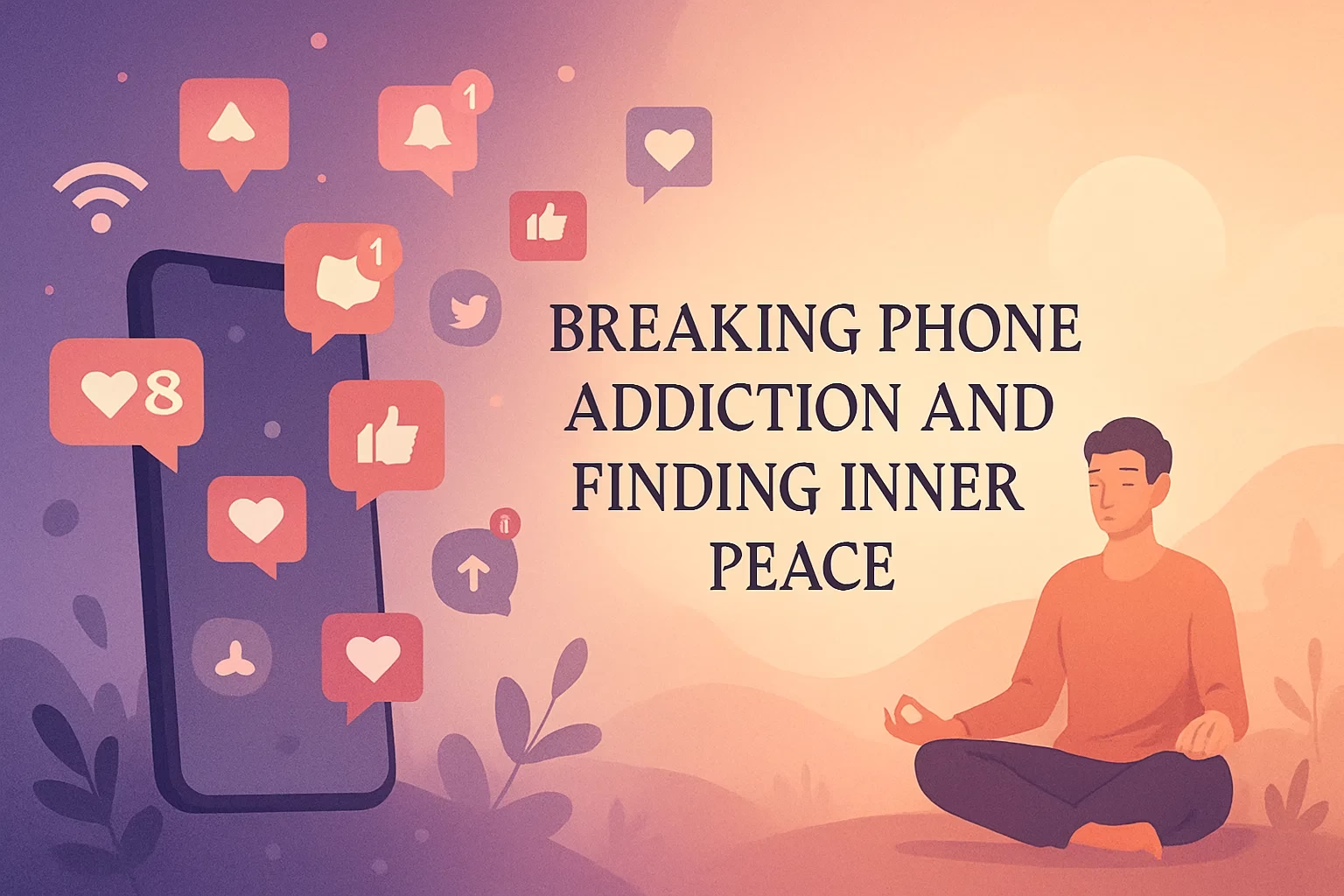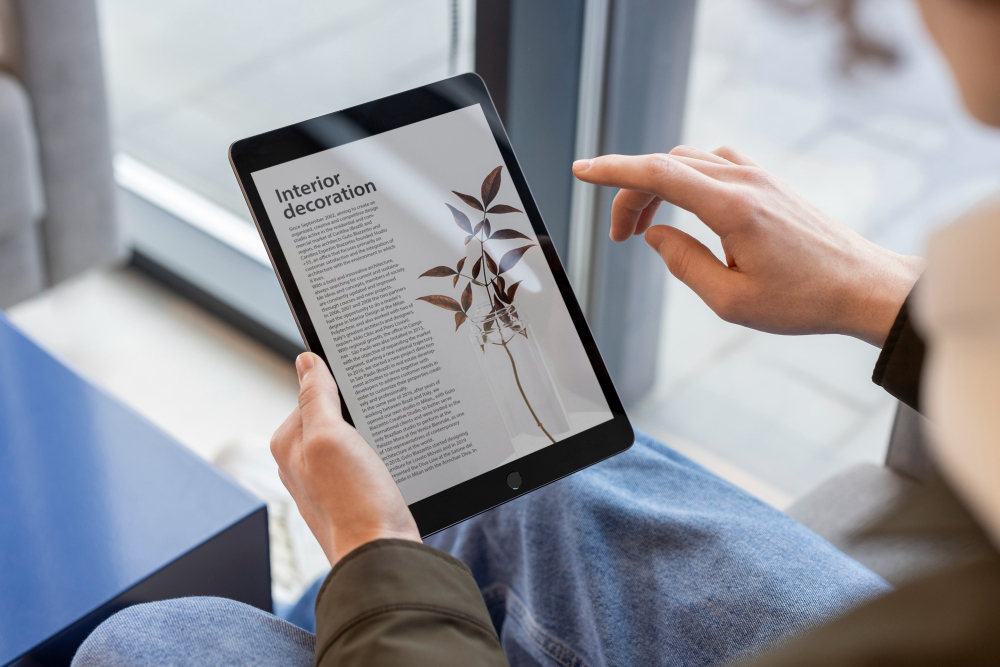
Table of Contents
Digital Overload: The Modern Struggle with Silence
In a world constantly buzzing with notifications, vibrations, and endless scrolling, silence has become a rare and sacred experience. Even in moments of physical stillness, the mental noise persists – the digital world continues to echo in our minds. This overwhelming experience is known as digital overload, and it’s one of the most pressing spiritual challenges of our age.
This blog post explores the spiritual, philosophical, and practical path to breaking phone addiction and reclaiming inner peace. It offers insight not only into the dangers of digital overwhelm but also the deep rewards of mindful disconnection.
What is Digital Overload? The Invisible Weight
Digital overload occurs when the human mind is constantly stimulated by digital inputs—social media feeds, emails, messages, breaking news, and endless video content. It fragments attention, reduces emotional bandwidth, and severs the connection with the present moment.
Modern psychology refers to this state as “continuous partial attention”, where individuals are never fully present in one experience, always half-engaged with something else. The spiritual consequence is profound: a mind that is restless cannot reflect, grow, or find peace. Scientific research from the Journal of Behavioral Addictions links excessive screen use to anxiety, depression, and decreased cognitive control. Yet the impact goes beyond the mind—it touches the soul.
The Spiritual Cost of Digital Dependence
In most spiritual traditions, the path to awakening begins with silence and presence. Whether it’s meditation in Buddhism, contemplative prayer in Christianity, or the yogic practice of dhyana in Hinduism, inner peace arises when external noise subsides. But when attention is repeatedly hijacked by apps and algorithms, the capacity for stillness weakens. The soul becomes disoriented.
Swami Sivananda once said, “The mind is like a drunken monkey stung by a scorpion.” In the age of digital addiction, this monkey now carries a smartphone. The spiritual self suffers not because of the device, but because of disconnection from one’s own being.
Recognizing the Symptoms of Phone Addiction
To overcome digital overload, one must first recognize its signs:
- Inability to focus without checking the phone
- Emotional restlessness when the phone isn’t nearby
- Doomscrolling through content late into the night
- Shortened attention spans and shallow breathing
- Difficulty sleeping due to screen exposure
- Feeling disconnected from real-world relationships
These symptoms mirror traditional signs of spiritual disconnection: lack of presence, agitation, shallow awareness, and emotional fatigue.
The Philosophy of Digital Mindfulness
Spiritual philosopher J. Krishnamurti spoke of “choiceless awareness” — a state of pure observation without judgment. In the context of phone addiction, this means becoming aware of the impulse to check the device, observing it without reacting.
Philosophically, the phone is not the enemy. The true challenge lies in the conditioned patterns of the mind. The device merely reflects the restlessness already within. Hence, the solution is not to reject technology, but to return to awareness.
Five Spiritual Habits to Overcome Digital Overload
1. Create Sacred Spaces of Disconnection
Designate certain areas as screen-free: the dining table, bedroom, or meditation space. When these zones are respected, the mind begins to associate them with stillness, not stimulation.
2. Embrace the Practice of Digital Sabbaths
Borrowed from religious tradition, a digital sabbath is a day of intentional disconnection. Whether it’s one full day or just a few hours each week, the absence of digital noise allows the nervous system to reset.
3. Meditate Daily to Reconnect with Inner Stillness
Mindfulness meditation, breath awareness, and mantra repetition are powerful tools for breaking reactive habits. Just ten minutes a day can reduce compulsive checking behaviors.
4. Practice the STOP Method
This mindfulness technique helps interrupt digital impulses:
- Stop
- Take a breath
- Observe the moment
- Proceed with awareness
It cultivates the space between stimulus and response—the space where peace is found.
5. Reground Through Nature and the Body
A walk without the phone. Gardening. Grounding the feet in the soil. These practices draw attention away from the virtual and into the visceral, restoring connection to the Earth and self.
Digital Detox: A Gateway to Inner Peace
Once digital dependency is reduced, the benefits ripple outward. Clarity improves. Emotions stabilize. Sleep deepens. Relationships thrive. Even creativity, often buried under digital clutter, resurfaces.
As attention is freed from fragmentation, the mind naturally settles. This is not escape, but return—a return to the natural rhythm of being.
Wisdom from Genuine Sources
Several respected thinkers and teachers have emphasized the importance of digital restraint:
- Cal Newport, author of Digital Minimalism, advocates for intentional tech use that aligns with core values.
- Thich Nhat Hanh, in his teachings, reminds practitioners to breathe and return to the present moment with mindfulness.
- The Dalai Lama warns that digital distraction distances individuals from authentic happiness.
These voices converge on one truth: inner peace is not a function of external circumstances, but of internal alignment.
Cultivating Long-Term Awareness
Overcoming phone addiction is not a one-time fix but a lifelong journey of remembrance. In spiritual traditions, this process is known as abhyasa — consistent practice.
Every time the phone is set down mindfully, it becomes a small act of liberation. Every pause becomes a prayer. Every moment of awareness reclaims space once lost to noise.
Final Reflections: Returning to the Self
The modern world is unlikely to slow down. But the inner world can. In the space between digital pings and silent breaths lies the potential for profound peace. By gently breaking phone addiction and embracing spiritual presence, the soul begins to remember its own rhythm. Not as a rejection of the digital age, but as a rebalancing—a return to a life where technology serves the soul, not consumes it.
Find out more about habits of the spiritually awakened people and sacred soul here.


